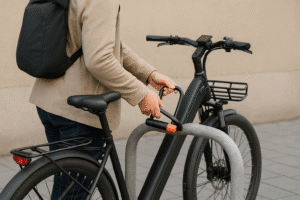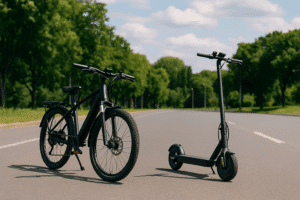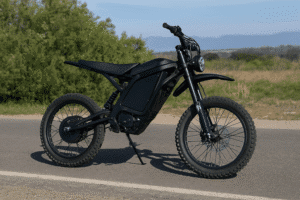If your 7-speed bicycle gear shifter is skipping gears, feels stiff, or refuses to move through all the speeds, you can usually fix it at home with a few tools and some patience.
This guide walks you through inspecting, adjusting, and maintaining your shifter so your rides stay smooth and reliable.
Key Summary:
To fix a 7-speed bicycle gear shifter, inspect and replace worn cables, adjust tension with the barrel adjuster, check derailleur alignment, fine-tune the limit screws, and clean and lubricate all moving parts. If shifting issues remain, the shifter may need servicing or replacement.
Common Causes of Shifter Problems
Most 7-speed shifter issues come from wear, dirt, or minor misadjustments. Knowing the root cause makes fixing the problem much quicker.
- Cable stretch: Over time, shifter cables naturally stretch with use, causing delayed or inaccurate shifting.
- Dirt and grime buildup: Dust, mud, or old grease inside the shifter or derailleur can make movements sluggish.
- Kinked or frayed cable housing: Damaged housing adds friction, making shifting harder or less precise.
- Bent derailleur hanger: A small bend from a crash or bike fall can throw the derailleur out of alignment.
- Worn chain or cassette: As teeth wear down, the chain may slip or fail to engage properly.
- Internal shifter wear: Old or heavily used shifters can have worn springs or sticky internal parts.
Read more: Common e-bike problems and fixes
Tools & Supplies You’ll Need
Before you start, gather the basics so you don’t have to pause mid-repair.
- Bike repair stand (optional but helpful)
- Hex wrenches (various sizes)
- Flathead or Phillips screwdriver (depending on your derailleur screws)
- Bike-specific lubricant
- Degreaser or cleaner
- Cable cutters
- Replacement shifter cable and housing (if needed)
How to Fix a 7-Speed Bicycle Gear Shifter
Below are the exact steps you can follow to diagnose and repair most shifting issues. Work in order for the best results.
Step 1: Inspect the Shifter and Cables
Start by checking for visible wear. Look for frayed, rusted, or kinked cables and any damage to the cable housing. Damaged cables create friction and poor shifting.
If you find fraying or rust:
- Shift to the smallest rear cog to release cable tension.
- Loosen the cable anchor bolt on the derailleur.
- Remove the old cable and housing.
- Thread in the new cable, making sure it sits securely in the shifter and derailleur.
Step 2: Check and Adjust Cable Tension
Cable tension controls how precisely the derailleur moves between gears. Too tight, and the chain struggles to drop to smaller cogs. Too loose, and it won’t climb to larger cogs.
- Use the barrel adjuster on the shifter or derailleur to fine-tune.
- Turn it counterclockwise to increase tension or clockwise to decrease.
- Make small adjustments, testing after each turn until shifting feels smooth.
Step 3: Verify Derailleur Alignment
A bent derailleur hanger can throw off the entire shifting range.
- Stand behind the bike and check if the derailleur cage is parallel to the cogs.
- If it’s angled, you may need a derailleur alignment tool or to replace the hanger.
- Misalignment can cause skipping, sluggish shifting, or chain rub.
Step 4: Adjust Limit Screws
Limit screws set the derailleur’s boundaries so it doesn’t push the chain off the cassette.
- H screw controls the smallest cog (outer limit).
- L screw controls the largest cog (inner limit).
Shift to the smallest cog and check the alignment. Adjust the H screw until the jockey wheel lines up perfectly with the cog.
Then shift to the largest cog and adjust the L screw the same way.
Step 5: Clean and Lubricate
Dirt and grime inside the shifter and derailleur can cause stiffness.
- Spray degreaser into the shifter (without fully disassembling unless you’re confident).
- Wipe the derailleur clean and lubricate the pivot points.
- Lightly oil the cables and housing to reduce friction.
Step 6: Troubleshoot Common Problems
Even after adjustments, you might run into issues that need a quick diagnosis. Here’s what to look for and how to fix them:
- Shifter not moving through all gears: Likely dried grease or broken internal springs. Clean and re-lube, or replace if very worn.
- Stiff shifting: Check for kinks in the housing, replace if damaged.
- Skipping gears: Usually tension-related; recheck Step 2.
- Not reaching the largest/smallest cog: Fine-tune limit screws.
Step 7: Final Test and Road Check
Once everything is adjusted:
- Spin the pedals while shifting through all gears on a repair stand or while the bike is flipped upside down.
- Take a short ride and test under load.
- Make small tweaks to tension or limits if needed.
When to Seek Professional Help
If you’ve adjusted the cables, checked alignment, and cleaned the components, but the shifter still won’t work, it’s time to get help. A bike mechanic can diagnose deeper problems like internal shifter damage or a bent derailleur hanger that you can’t see by eye.
Professional servicing is worth it when the shifter is very old, the internal mechanism is stuck, or replacing multiple parts is required.
They have the tools and expertise to get your bike shifting like new without guesswork.
Final Words
Fixing a 7-speed bicycle gear shifter usually comes down to inspecting cables, adjusting tension, aligning the derailleur, and keeping things clean and lubricated.
With basic tools and a little time, you can solve most shifting problems yourself and avoid costly shop visits.
Keep your drivetrain maintained, and you’ll enjoy smoother, more reliable rides for years.
FAQs
How do I know if my shifter cable is broken?
A broken shifter cable often causes the gears to stop responding or shift unpredictably. Look for frayed strands, rust, or a cable that feels loose when you move the shifter. If the derailleur doesn’t move when you shift, the cable likely needs replacing.
Why is my bike skipping gears?
Bikes usually skip gears when the cable tension is incorrect or the derailleur hanger is bent. Loose tension makes it hard for the chain to climb to larger cogs, while too much tension can prevent it from dropping to smaller ones. Realigning the derailleur and adjusting the tension often solves the problem.
Can I fix the shifter without a bike stand?
Yes, you can repair a shifter without a stand by flipping the bike upside down or leaning it securely against a wall. A bike stand makes the process easier and safer, but it’s not essential for basic adjustments.
How often should I lubricate the cables?
Lubricate the cables every 2–3 months, or more often if you ride in wet or dusty conditions. Regular lubrication reduces friction, prevents rust, and keeps shifting smooth.
Michael Josh is a hands-on e-bike tester and reviewer at BoltBikers, known for putting every model through real-world rides before sharing his thoughts. With a sharp eye for performance, comfort, and build quality, he helps the team choose which bikes are worth featuring. Backed by years of experience in tech and gear reviews, Michael brings trusted, honest insights to help readers find the right e-bike for their needs.








